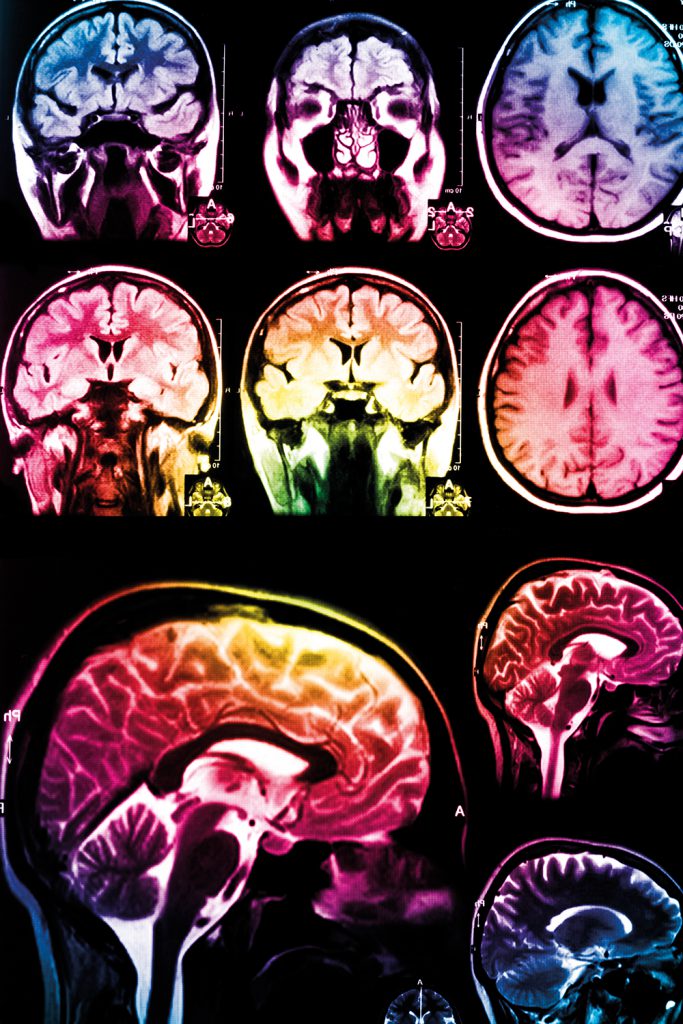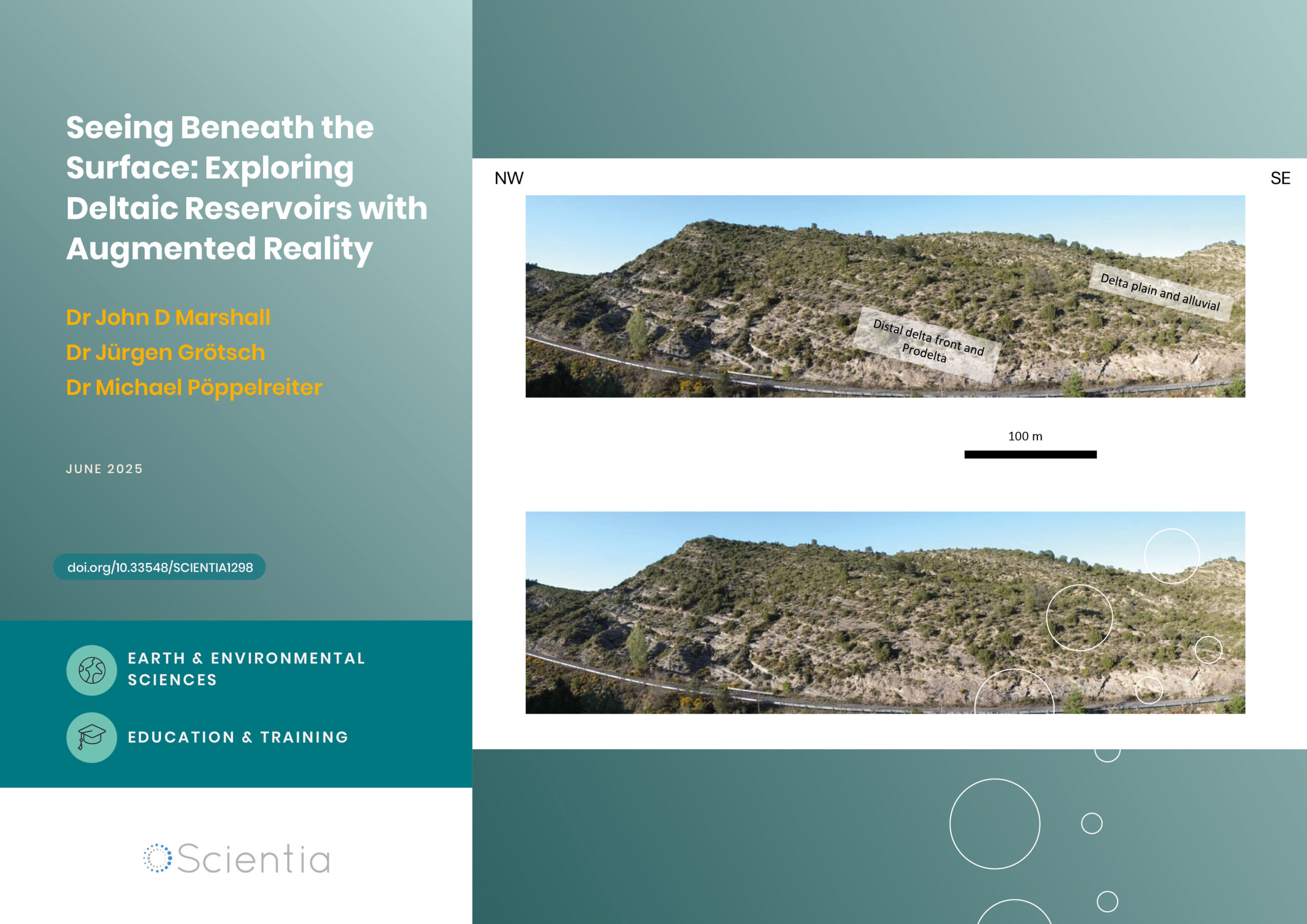Professor Mark D’Esposito – Everyday Miracles: Unravelling the Mysteries of Working Memory
To accomplish even a simple goal, our brain must coordinate thousands of pieces of information, remember which parts are relevant, and ignore anything that is extraneous. Professor Mark D’Esposito of the University of California, Berkeley, studies how different parts of the brain work together to create working memory, the cognitive system that temporarily and actively holds information in mind allowing us to complete complex tasks.
Whether you realise it or not, by this point in your day you have accomplished many seemingly minor tasks. Though it probably felt effortless to you while you were going about your routine, your brain has had to coordinate vast amounts of information to get you to where you are now, reading this article.
All these activities required paying attention to the right details, coordinating a series of complex actions, and filtering out an incredible amount of irrelevant information from your environment. Professor Mark D’Esposito and his team at the University of California, Berkeley, want to understand how the brain manages these everyday feats and what is happening between the cells of the brain to make it all come together.

Where Working Memory Works
Working memory refers to information we have readily available to us, because it was either recently experienced or recently retrieved from long-term memory, even though the cue for this information is no longer present. For example, being told a new telephone number and then holding it actively in mind while you then hunt for a pen and paper to scribble it down.
The information stored in working memory tends to be replaced by more recent events after a period of time if it is not being used. You can probably easily recall your own telephone number, because most of us have that safely stored in our long-term memory. However, on being told a new telephone number, we have to actively maintain this in our working memory by repeating it our head, otherwise it will quickly fade from recall. Working memory helps us to accomplish tasks efficiently by allowing us to keep using recently acquired relevant information.
The most prominent model of working memory is the state-based model. In this model it is proposed that working memory relies on the allocation of attention to existing mental representations, effectively focusing attention to activate information already stored internal representations, whether semantic knowledge (e.g., letters, digits, words), sensory, or motoric. By paying attention to these mental representations, the brain brings them into working memory to help complete a task.
Professor D’Esposito and his team at the University of California, Berkeley, want to understand how the neural cells of the brain function to create working memory. Unlike processes such as vision and hearing, working memory is not relegated to specific areas of the brain. Rather, it appears to be an emergent property of several systems working together.
One of the earliest experiments demonstrating the neural basis of working memory was performed with monkeys in the early 1970s. Researchers measured the activity of single neurons while the monkey performed a task that required them to retain information for a brief period of time. They found that the neurons started firing when the information was acquired and continued to fire at regular intervals until the information was no longer needed.
Professor D’Esposito has progressed these early studies taking advantage of functional magnetic resonance imaging (fMRI) that can be used to measure activity in the brain. Professor D’Esposito and his team found that when people are completing a working memory task requiring information to be kept in mind during a short delay period, the brain continued to show sustained activity after the initial memorisation phase – even though the to-be-remembered information was no longer present. Critically, rather than being buffered in a particular or specific part of the brain, this process of working memory appeared to involve many brain areas acting in unison.

Finding the Brain’s Control Centre
Neurons in the brain are organised into regions or modules that handle specific types of information. The prefrontal cortex, the foremost and most evolved part of the brain compared to other species, is the region of the brain that gives us conscious control over our actions and allows us to process complex thoughts. Other regions of the brain are dedicated to different sensory or motor functions, such as the visual cortex and motor cortex.
Professor D’Esposito has found that when a region of the brain is involved in the initial sensing of information, it is also active while that information remains in working memory, along with the prefrontal cortex. His team is interested in the roles the prefrontal cortex plays in both working memory and cognitive control and understanding the functions of smaller modules of neurons within this critical brain region.
Using fMRI to study brain activity, Professor D’Esposito’s team asked participants to perform matching tasks where the information was ranged from concrete (such as matching squares by colour), to mildly abstract (matching a red square to a hexagon, or a blue square to a star), to very abstract (matching a shape if the object is blue, or orientation if the object is red).
They found that abstract tasks engaged the prefrontal cortex depending on the complexity and level of abstraction. The prefrontal cortex appears to maintain more conceptual representations of information needed in working memory to complete a task – it maintains the rules that must be followed while the sensory regions maintain the relevant concrete information.
Professor D’Esposito and his team have also demonstrated that specific smaller regions within the prefrontal cortex appear to be separated into functional modules that manage increasing levels of abstraction. In his fMRI studies, as tasks required keeping more conceptual information in working memory, clusters of neurons were active towards the front of the brain in this region.
These findings suggest that conceptual, more abstract rules are stored in the anterior portion of the prefrontal cortex. Such rules are those allow us to generalise from one situation to the next – for example, figuring out an unusual mechanism by which a door is opened, such as having to pull a cord rather than turn a knob, even if we have no prior experience of using that mechanism to open a door. In contrast, concrete rules are those which specific responses are tied to specific behaviours, such as when driving a car – mirror, signal, manoeuvre. These types of rules are stored in the posterior regions of the prefrontal cortex.
Importantly, the prefrontal cortex is proposed to be the part of the brain that imbues our ability to orchestrate thought and action based on our goals and intentions, rather than being driven automatically by the world around us. In other words, it allows us to control the focus of the rest of the brain to accomplish goals. Professor D’Esposito believes that the prefrontal cortex exerts executive control over the rest of the brain through top-down processing.
This means that when the prefrontal cortex identifies a goal, such as finding a friend in a crowded venue, it directs how information managed by other areas of the brain should be processed and attended to, in this example, tuning out irrelevant details and focusing on key facial features.
In his studies, Professor D’Esposito has found that this occurs through two primary processes – regulating selective attention to specific signals by enhancing relevant signals while suppressing irrelevant ones. His team has confirmed this functionality by studying the fMRI activity of healthy people during different tasks and comparing them to the fMRI activity and task performance of patients with brain injuries that specifically affect the prefrontal cortex.
‘Neurologists like myself, are convinced that the secret to solving the mystery of how the brain works can be answered by understanding how neurons communicate.’

Networking for Success
Recognising that the prefrontal cortex and other regions of the brain all chip in to create working memory is one thing, understanding how they communicate is another. Professor D’Esposito elaborates that, ‘neurologists like myself, are convinced that the secret to solving the mystery of how the brain works can be answered by understanding how neurons communicate.’
Professor D’Esposito and his team’s present work focuses on how neurons form networks within the brain that make working memory and executive control by the prefrontal cortex possible. Each neuron in the brain can only perform a single function, so he hypothesises that complex representations of situations are formed by how the modules in a network interact with one another. He proposes that working memory emerges from the way the prefrontal cortex interacts with all the other areas of the brain related to an experience or task.
He explains: ‘Just like Facebook connects people, this enormous network in our heads connects neurons, and they, it turns out, communicate with each other in much the same way we do with our friends and family members.’ We reach out to different members of our social network to fulfill different needs, just as our neurons interact with different parts of the brain to accomplish what is necessary for a task.
Bringing it All Together
The effects of widespread neurotransmitters, like dopamine, that act as modulators of overall brain activity have often been overlooked in models of working memory and cognition. The importance of dopamine in regulating brain activity and function is highlighted by the key role it plays in Parkinson’s disease, when the brain cells that produce dopamine become damaged and no longer release this transmitter, resulting in disrupted cognitive ability and movement.
In his quest to understand the biological mechanisms that create memory and thought, Professor D’Esposito has focused in on the role these modulating transmitters may play. He has found that dopamine levels in different areas of the brain play a critical role in modulating working memory. There is an optimal level of this important neurotransmitter needed to perform working memory tasks. Too much dopamine or too little disrupts normal function.
The team propose that when dopamine is elevated in the prefrontal cortex, we focus on the information already active in our working memory, when it is higher in a region of the brain called the striatum, our brain begins switching over the items held in working memory. Changes to dopamine levels in the prefrontal cortex or the striatum could have different consequences for cognitive stability and flexibility. For instance, high levels of dopamine in the prefrontal cortex could promote stability but reduce flexibility. This mechanism helps to coordinate large areas of the brain and maintains the balance between focus and flexibility that makes human thought so adaptable.

The Full Picture
By integrating novel approaches to brain imaging and neurotransmitter measurements with classic behavioural and cognitive studies, Professor D’Esposito is building a comprehensive understanding of how the brain leverages different mechanisms to make working memory work. Illuminating how these everyday mental processes occur offers powerful insights into how the brain functions and shines light on the mysteries of the human mind.
Reference
https://doi.org/10.33548/SCIENTIA369
Meet the researcher

Professor Mark D’Esposito, MD
Professor of Neuroscience and Psychology
Director, Henry H Wheeler Jr Brain Imaging Center
Helen Wills Neuroscience Institute
University of California, Berkeley
Berkeley, CA
USA
Professor Mark D’Esposito earned his medical degree at the SUNY Health Science Center at Syracuse and completed clinical training in Neurology at Boston University Medical Center. After prestigious appointments at the Memory Disorders Research Center at Boston University and Braintree Rehabilitation Hospital and the University of Pennsylvania School of Medicine, he was recruited to the Helen Wills Neuroscience Institute at the University of California, Berkeley to become Professor of Neuroscience, and the Director of the newly created Henry H Wheeler, Jr Brain Imaging Center. He is also practicing neurologist at the Northern California VA Health Care System. His research investigates how the brain supports high-level cognitive processing, how the brain recovers from injury, and potential treatments for the injured brain. Over the course of his career, Professor D’Esposito has published over 375 academic articles as well editing books about cognitive neuroscience and neurology. He is currently Editor-In-Chief of the Journal of Cognitive Neuroscience, and past President of the Society for Behavioral and Cognitive Neurology and Chair of the Organization for Human Brain Mapping. Professor D’Esposito has received numerous awards and honors including the Norman Geschwind Prize in Behavioral Neurology from the American Academy of Neurology and election to the American Association for the Advancement of Science.
CONTACT
FUNDING
National Institutes of Health
Veterans Administration Research Service
FURTHER READING
KK Sreenivasan, M D’Esposito. The what, where and how of delay activity, Nature Reviews Neuroscience, 2019, doi: 10.1038/s41583-019-0176-7.
BR Buchsbaum, M D’Esposito M. A sensorimotor view of verbal working memory.
Cortex, 2019, 112, 134–148.
M D’Esposito, BR Postle, The cognitive neuroscience of working memory, Annual Review of Psychology, 2015, 66, 115–42.
KK Sreenivasan, CE Curtis, M D’Esposito. Revising the role of persistent neural activity in working memory, Trends in Cognitive Science, 2014, 18, 82–89.
R Cools, M D’Esposito, Inverted-U–shaped dopamine actions on human working memory and cognitive control, Biological Psychiatry, 2011, 69, e113–e125.
D Badre D, M D’Esposito. Is the rostro-caudal axis of the frontal lobe hierarchical? Nature Reviews Neuroscience, 2009, 10, 659–69.
Creative Commons Licence
(CC BY 4.0)
This work is licensed under a Creative Commons Attribution 4.0 International License. 
What does this mean?
Share: You can copy and redistribute the material in any medium or format
Adapt: You can change, and build upon the material for any purpose, even commercially.
Credit: You must give appropriate credit, provide a link to the license, and indicate if changes were made.
More articles you may like
Probing Electron Dynamics in the Ultrafast Regime
In the atoms that make up the matter around us, negatively charged particles called electrons have properties such as spin and orbital angular momentum. Researchers at Martin Luther University Halle-Wittenberg have developed a theoretical framework which allows them to simulate the dynamics of the spin and orbital angular momentum of electrons in materials when probed with an ultrafast laser pulse. Using this framework, they are able to simulate different materials and improve our understanding of dynamics on an atomic scale.
Seeing Beneath the Surface: Exploring Deltaic Reservoirs with Augmented Reality
In the Aínsa Basin of the Spanish Pyrenees, the Mondot-1 well was drilled, cored, and fully logged to capture a detailed record of a long-buried ancient river delta system. Dr. John D. Marshall, Dr. Jürgen Grötsch, and Dr. Michael C. Pöppelreiter with co-workers at Shell International used this core to trace how sediments once flowed across the landscape, and were deposited under shifting tectonic conditions. The team employed augmented reality and interactive virtual displays; these innovative tools offer new ways to explore subsurface depositional systems, and are particularly useful in locations where physical access to the core is difficult, or no longer possible.
Dr Jim Wu | Ziresovir Offers New Hope for Treating Respiratory Syncytial Virus Infections
Respiratory syncytial virus (RSV) causes respiratory tract infections in children and adults. While for many patients the outcomes of infection are mild, for others, infection can prove fatal, and there is a lack of effective treatments. Dr Jim Wu from the Shanghai Ark Biopharmaceutical Company in China carries out his vital research to develop new, safe, and effective treatments to tackle this killer.
Dr Sandra Grumelli | The Importance of the Choline in Chronic Lung Infections
People with chronic lung conditions like COPD and cystic fibrosis are vulnerable to lung infections caused by the bacterium Pseudomonas aeruginosa. These infections are often difficult to treat and can cause sudden worsening of symptoms, known as flare-ups or acute exacerbations. While we know P. aeruginosa triggers inflammation and damage in the lungs, much less is understood about how exactly it causes these flare-ups, or how it survives in such a harsh environment. Dr Sandra Grumelli from the Center of Investigations of Respiratory Diseases in Argentina, has explored the role of a common molecule called choline which is released during infection. Using a combination of mouse models and laboratory experiments, she has discovered that choline not only makes breathing harder, it also helps P. aeruginosa adapt to and persist in the lungs. Her research opens up new possibilities for tackling chronic infections by targeting the bacteria’s energy use and the way it responds to its environment.



